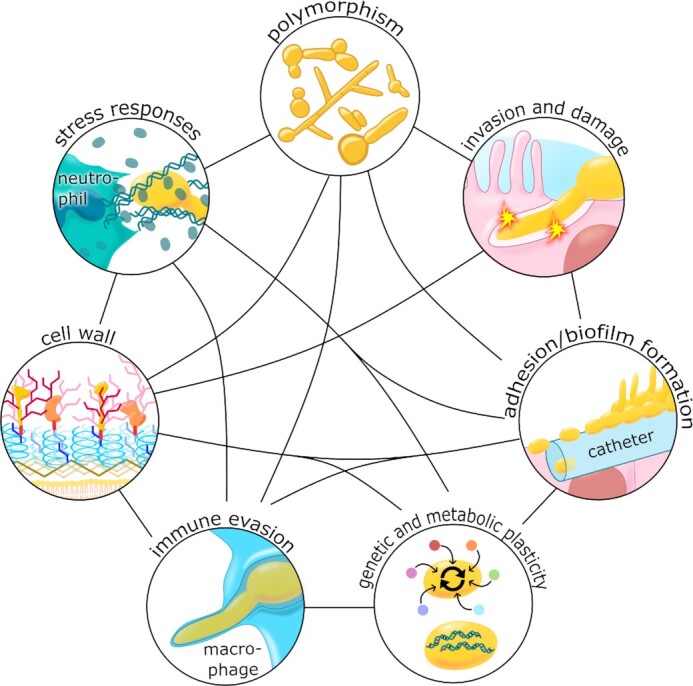Figure 4.

A combination of virulence factors and fitness attributes promote C. albicans virulence. Polymorphism: The ability of C. albicans to undergo morphological transitions allows it to adapt to different growth conditions, adhere to biotic and abiotic surfaces, invade cells and tissue, and escape from immune cells. Invasion and damage: A combination of induced endocytosis and active penetration promote fungal invasion of host tissues, and the accumulation of the toxin, candidalysin, in the invasion pocket leads to pore formation and host cell damage. Adhesion/biofilm formation: The battery of adhesins promotes fungal adhesions to biological and abiotic surfaces, which can lead to the development of biofilms, for example on medical devices such as catheters. Genetic and metabolic plasticity: Candida albicans displays a high degree of metabolic flexibility, which allows it to adapt rapidly to diverse host niches. This fungus also displays great genetic plasticity, which permits rapid evolutionary adaptation to selective pressures and stresses such as exposure to antifungal drugs. Stress responses: Candida albicans activates robust stress responses following exposure to host imposed stresses, including ROS and RNS, which enhances fungal survival following immune attack, for example. Cell wall: As well as maintaining cell morphology, the robust cell wall provides protection against host-imposed stresses including changes in osmolarity. Immune evasion: Candida albicans has evolved a variety of immune evasion strategies that include the modulation of PAMP exposure at the cell surface to evade immune recognition, and phagocytic escape mechanisms to evade killing by innate immune cells. See text.
